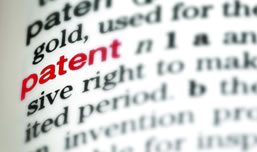Carve-outs and skinny labelling
March 2013
NOTE - Information correct at date of publication. There have since been updates to this content: Please see updated content here |
No medicinal product can be placed on the market in the European Union (EU) unless a marketing authorisation has been granted for the product.
As part of that approval process, product information (the Summary of Product Characteristics (SmPC), the package leaflet for patients and the labelling) must be submitted to the relevant regulator. This includes information on indications and dosages. There is a requirement that when a generic medicine is authorised that the same information will appear in the 'product information' of the generic medicine as that of the reference medicine.
However, when patent protection for a reference medicine expires, it is common for further indications of the medicine to remain independently patented. Thus, the medicine itself can be manufactured without patent infringement but cannot be used for the patented uses. Therefore, if generics were obliged to include the new indication in their product information they would be liable for patent infringement. This would potentially enable the manufacturer or exclusive licensee of the reference product to prevent generic marketing of the product indefinitely.
Consequently, the European medicines legislation allows the generic applicant for a marketing authorisation to exclude from the product information parts of the labelling referring to indications or dosage forms which are protected by patents. This is often referred to as "carving-out" patent protected labelling or "skinny labelling". If the application for authorisation is via the centralised route, an application for a duplicate marketing authorisation can be made in which the patented indications are excluded.
The legislation does not discuss any other deletions or changes directly connected to the patented indication, for example safety information, contraindications or warnings that may allude to the patented indication, and the guidance is that any other deletions will need to be justified and discussed with the Member States concerned. When a carve-out is requested, the individual Member States decide if a statement to explain why therapeutic indications or dosage forms are missing from the package leaflet should be included. However, if such a statement is included it should use the "blue box concept".
Blue Box Concept – standard form
'(Active substance) which is contained in (product) (may also be/is also)* authorised to treat other conditions which are not mentioned in this leaflet. Ask your doctor or pharmacist if you have further questions.'
* (as appropriate for the national market)
Off-label prescribing
With the increase in off-label prescribing in Europe, it could be argued that the carve-outs used by generic firms ignore market realities and that even if a generic drug is formally approved only for unpatented uses, doctors will prescribe (in circumstances where GMC guidelines permit (see 'Off-licence and off-label use')) for the patented indication and pharmacists may nonetheless substitute the generic for all indications once it becomes available. Labelling may become a new battleground for innovator and generic companies in Europe and there is already a line of developing case law on this in the US.
Patent infringement in the UK and Europe
 It is generally thought, although there is no authority, that the approach of the UK courts would be that usage patents can only be directly infringed if the medicinal product at issue is accompanied by a package leaflet referring to the patented indications or dosage forms protected by the usage patent. However, judicial guidance from the Court of Appeal in a recent case concerning indirect infringement, called Grimme v Scott, may suggest a different outcome is possible. Whilst this case did not concern pharmaceuticals, it held that a person or company is liable for infringement if they supply 'means essential' to a patented invention, when they know or it is obvious that the "ultimate users will intend to do acts amounting to infringement" . To date, it is untested in any pharmaceutical case before the UK courts whether this could apply to a generic product that is later used for a patented indication. It may be that it is difficult in an industry as regulated as the pharma sector to prove such indirect infringement where the allegedly infringing product has a skinny label on which the patented indications and dosage forms have been carved out.
It is generally thought, although there is no authority, that the approach of the UK courts would be that usage patents can only be directly infringed if the medicinal product at issue is accompanied by a package leaflet referring to the patented indications or dosage forms protected by the usage patent. However, judicial guidance from the Court of Appeal in a recent case concerning indirect infringement, called Grimme v Scott, may suggest a different outcome is possible. Whilst this case did not concern pharmaceuticals, it held that a person or company is liable for infringement if they supply 'means essential' to a patented invention, when they know or it is obvious that the "ultimate users will intend to do acts amounting to infringement" . To date, it is untested in any pharmaceutical case before the UK courts whether this could apply to a generic product that is later used for a patented indication. It may be that it is difficult in an industry as regulated as the pharma sector to prove such indirect infringement where the allegedly infringing product has a skinny label on which the patented indications and dosage forms have been carved out.
Although, the patent legislation of the countries which have acceded to the European Patent Convention has similar provisions on indirect patent infringement as the UK and there is an increasing convergence of interpretation between the Member States, the risk of a finding of indirect infringement in any European Member State may depend on factors such as prescribing practices, in particular the frequency and known acceptability of off-label prescribing, together with policies on substitution and interchangeability, policies which currently vary between the Member States.
Practical steps to avoid infringement of usage patents?
Getting a marketing authorisation for the protected indication is not in itself enough to support a claim of infringement. Infringement is linked to the marketing of the product. Therefore, where there are usage patents, applications could be made to carve-out the patented indications or dosage forms from the product information in the relevant jurisdictions and to include a "blue box" statement explaining why therapeutic indications or dosage forms are omitted from the product information in that jurisdiction. (If authorisation is via the centralised route, an application for a duplicate marketing authorisation could be made in which the patented indications are excluded).
However, given the infringement risk described above, it may prove necessary in due course for generics to take more active measures to avoid infringement. In the absence of a process of certification that a drug will not be marketed for a patented use, as there is in the US, generics may ultimately have to consider taking steps to alert pharmacies and health practices of any restrictions on the use of their medicines.
Conclusion
Clearly, where a generic medicine is marketed for uses other than those patented and at a significantly lower price than the patented medicine, there may be instances where the generic medicine is prescribed or substituted for off-label and patented uses. With the increased practice of off label prescribing, innovators may argue that the ability of a generic company to avoid patent infringement by using an abbreviated label on the generic product ignores the commercial reality. Furthermore, there are signs from the US that companies are now prepared to challenge the practice of skinny labelling.
It remains to be seen whether simply carving out the patented indications or dosage forms will be enough to defeat a claim of indirect infringement or whether some additional action will be required. However, we expect that it will not be long before this issue is tested in the courts in a case taken by the owner of a use patent.
If you have any questions on this article or would like to propose a subject to be addressed by Synapse please contact us.


Paul England
Paul is a senior associate and professional support lawyer in the Patents group based in our London office.


